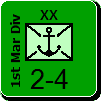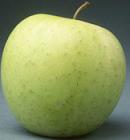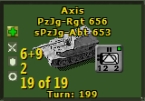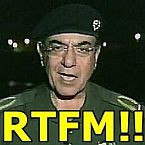golden delicious
Posts: 5575
Joined: 9/5/2000
From: London, Surrey, United Kingdom
Status: offline

|
quote:
ORIGINAL: Veers
Yes, to someone who is not the most frequent visitor to TDG, it would seem a site dedicated to useless arguments, rather than the design of quality scenarios. Though I, fortunately, have been around long enough to know that they have, at least, produced some quaility scenarios in addition to that...debate.
Well, although it's interminable and rambling, the debate over there is civilised and usually pretty interesting to participate in. In any case, discussion is resuming on Colin's Seelowe, and you can expect its release some time in the next forty years.
That we haven't produced many scenarios recently is a consequence of most of us having much less free time. A number of members have started families since joining the group, and I myself have been in full time work for almost a year, whilst my TOAW time is largely dedicated to my Grand Strategy project.
Anyway, on the subject of ultra-high proficiency units; I'm not sure of the exact formulae involved, but the bottom line is that at some point, a test is made against proficiency to determine whether attacking or defending units break off from combat. This has three ramifications;
a) if you are not concerned about turn burn, very high proficiency units can be counted on to see the attack out for most of the turn. This can be useful in some circumstances.
b) if for whatever reason a very high proficiency unit is in an attack where the defender is unlikely to retreat (this can occur if supporting units with lower proficiency have already dropped out of the attack) then this attack will likely continue indefinitely.
c) very high proficiency units are unlikely to retreat when on the defence.
This needs to be borne in mind in conjunction with the other two factor controlling whether units break off from combat;
1) proportionate losses. Thus a very high proficiency unit which is not particularly lethal (i.e. an infantry regiment as opposed to an assault gun battalion) will stay in combat itself whilst not causing sufficient losses to the defender to cause them to break off. By the same token, a defender which is unable to inflict serious losses on the attacker will keep them engaged for longer than one which can maul it in a single combat round. Finally, bear in mind whether it is AT strength or AP strength which is important, and that it is often difficult to knock out defending tanks in TOAW.
2) loss settings. These are fairly well understood. Note though that a minimise losses setting often will not stop a very high proficiency unit from banging away for eight rounds.
So here's your worst case scenario for turn burn: the defender is very resilient to losses for whatever reason and has high proficiency, but is not very lethal. The attacking unit has very high proficiency, is not very lethal, and either has no support or is supported by units which will quickly break off from combat.
An example of the above would be a rifle regiment attacking a fortified tank battalion.
_____________________________
"What did you read at university?"
"War Studies"
"War? Huh. What is it good for?"
"Absolutely nothing."
|
 Printable Version
Printable Version















 New Messages
New Messages No New Messages
No New Messages Hot Topic w/ New Messages
Hot Topic w/ New Messages Hot Topic w/o New Messages
Hot Topic w/o New Messages Locked w/ New Messages
Locked w/ New Messages Locked w/o New Messages
Locked w/o New Messages Post New Thread
Post New Thread